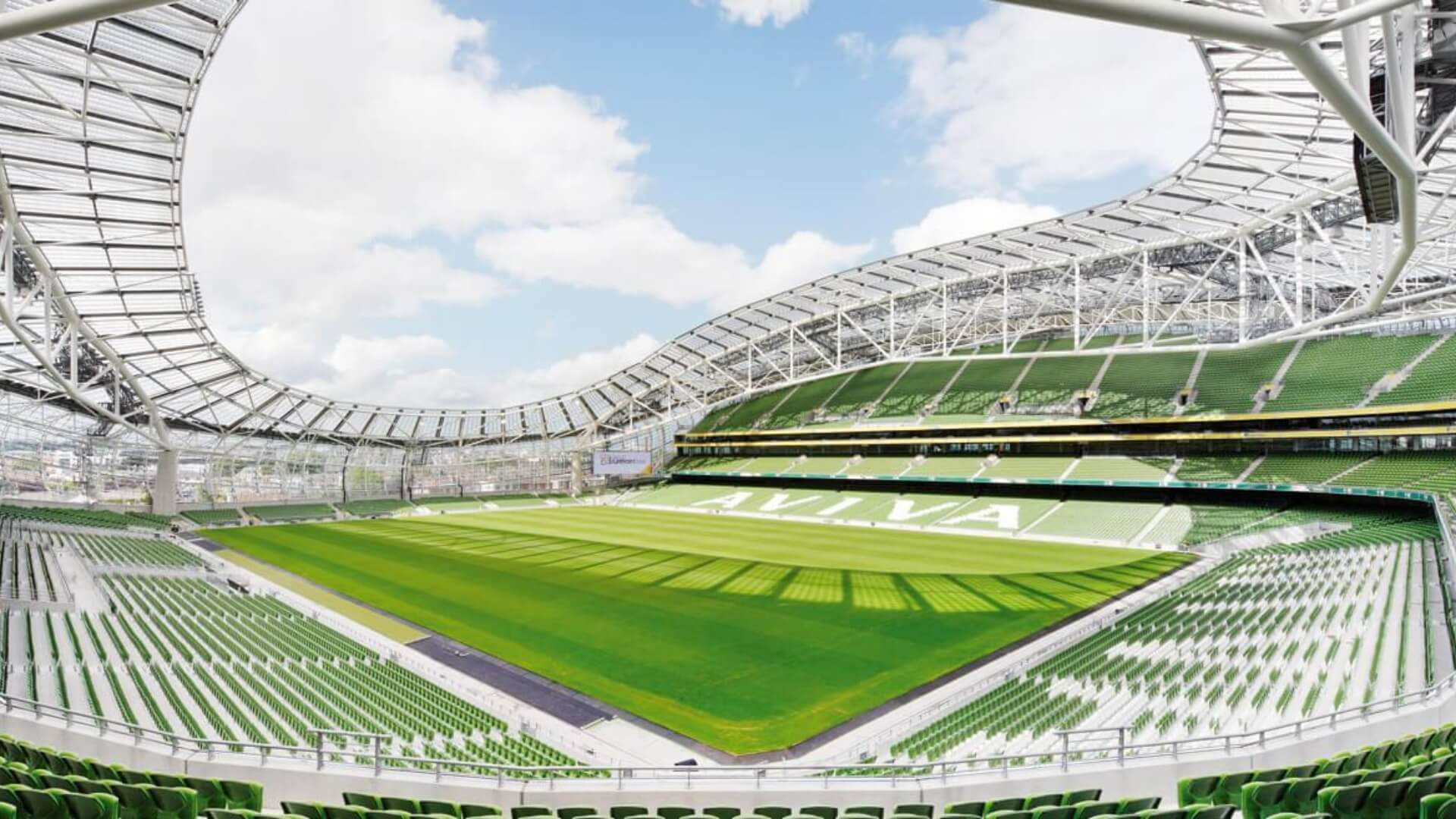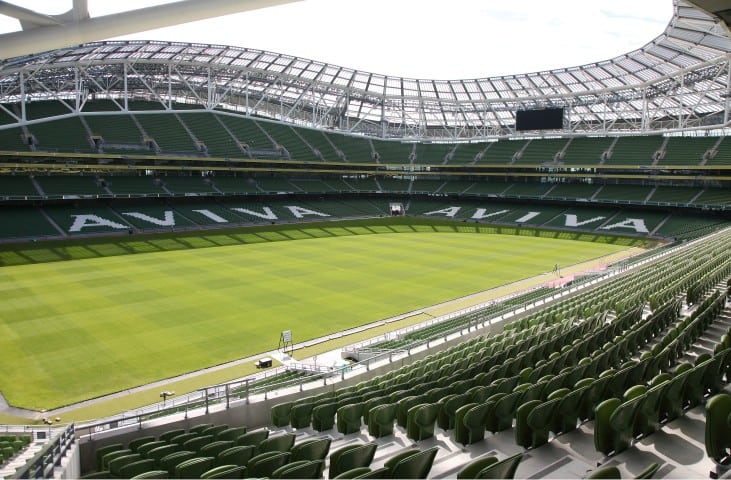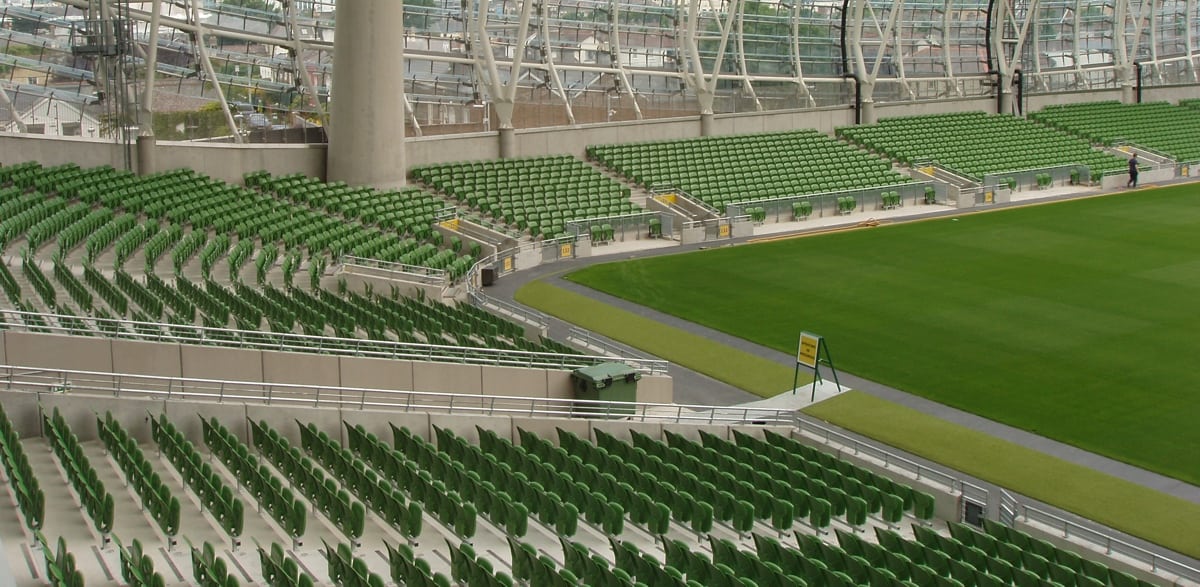

The Aviva Stadium (formally Lansdowne Road Stadium) is a sports stadium that was officially opened in 2010.
The stadium sits on the old site of Lansdowne Road Stadium which was demolished in 2007 to make way for the 50,000-spectator capacity project. Its curvilinear bowl shape form sits amongst a residential area and is designed to minimize impacts on the environment.
The stadium covers a total of 6.4 hectares with a 50m tall façade and cost €410 million to complete.
During the construction of the stadium 8,000 precast concrete units were made off-site and 72,000 tonnes of concrete was cast in-situ. 40% Ecocem GGBS was specified for use in all in-situ and precast elements saving over 4000 tonnes of C02. This amount of C02 equates to taking approximately 1,280 cars off the road for one year.
The new Aviva stadium incorporates a modern glazed curvilinear design.
The demolition of the old west stand reinforced concrete structure that spanned the Dart line was achieved in a 72-hour window over the Bank Holiday weekend with work including the reinstatement of the overhead line to allow Dart services to resume on a Tuesday morning.
This was was a significant engineering achievement and was a key milestone to ensure the overall stadium project progressed on schedule.
The main concept of the construction of the Aviva Stadium was energy efficiency through a sustainable design. Delivering on that promise, the stadium has several features that showcase how this was achieved.
The use of Ecocem GGBS in the concrete not only saved 4000 tonnes of C02 but gave a high-quality finish to the stadium. Due to the lighter finish of GGBS, the finished concrete surface has a greater albedo effect than Portland Cement. This means that more solar light is reflected back into the atmosphere instead of being absorbed by the concrete which reduces the heat island effect.
Old topsoil was reused for the new pitch. Glass and polycarbonate skin allows for maximum natural daylight to penetrate the stadium reducing the need for artificial lighting.
2010 Irish Concrete Society Awards – Building Category and Overall Winner.
2011 British Construction Industry Award (BCIA) – Best International Project. This award recognises excellence in UK and International Building & Engineering Projects

